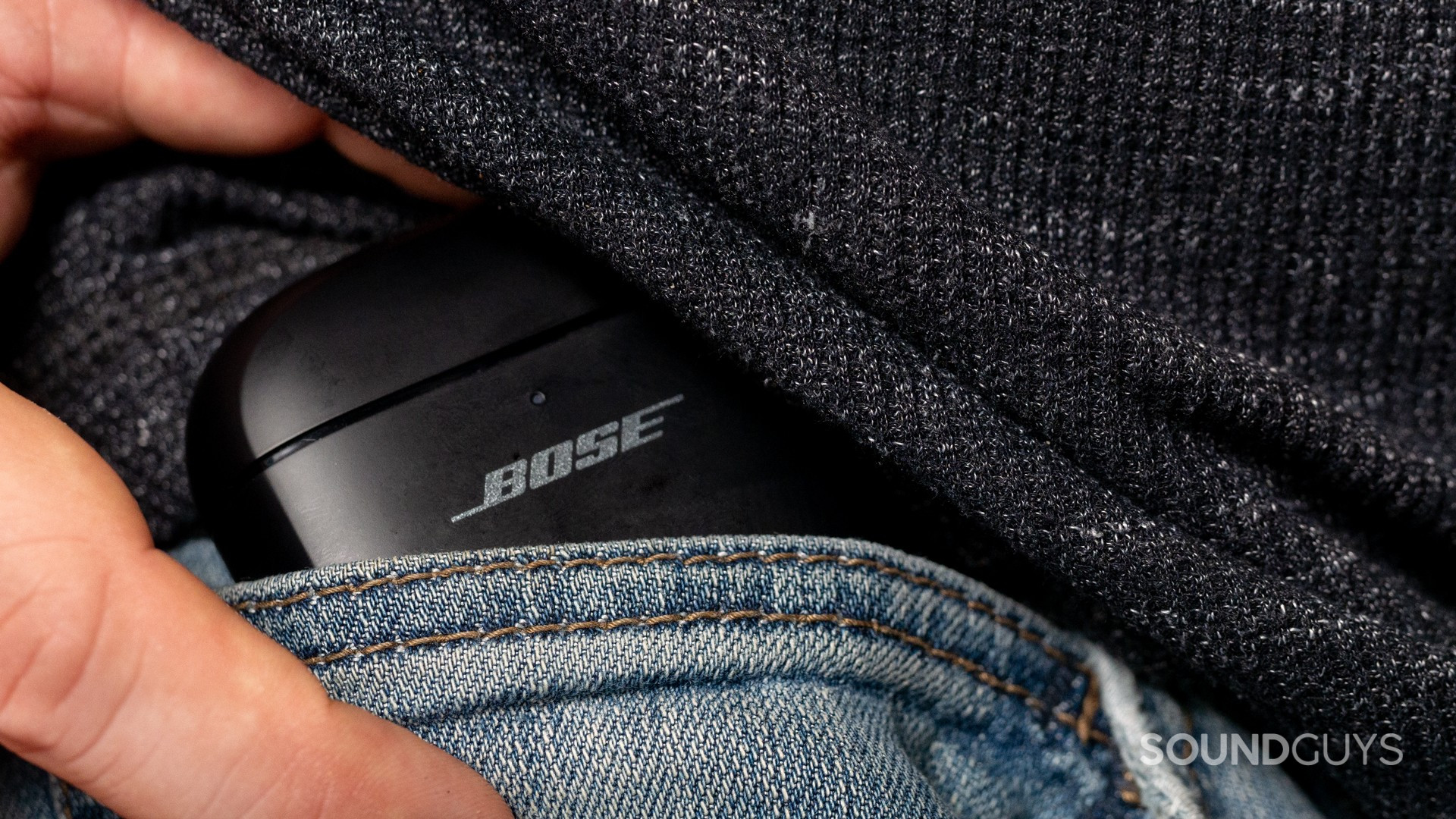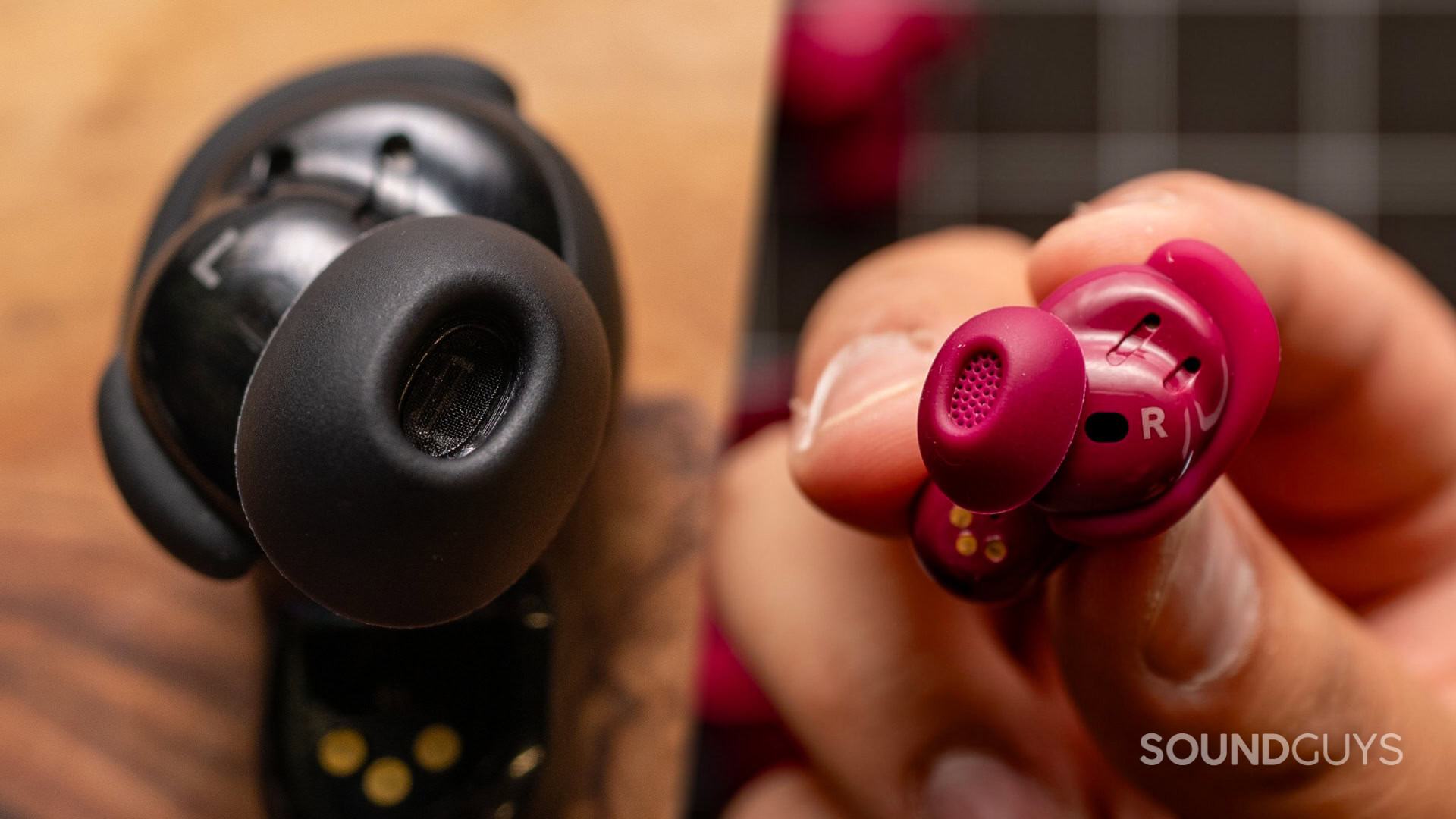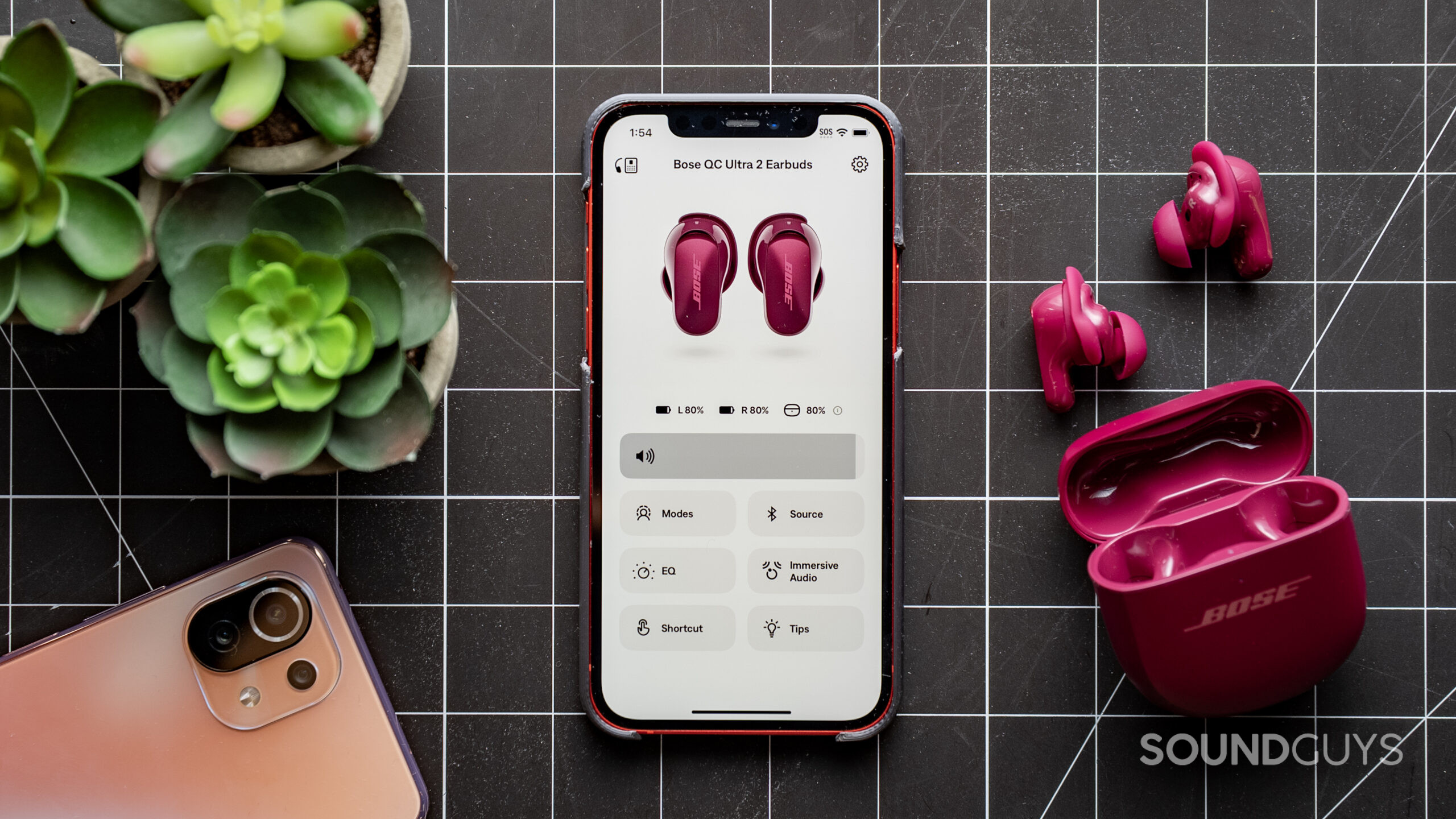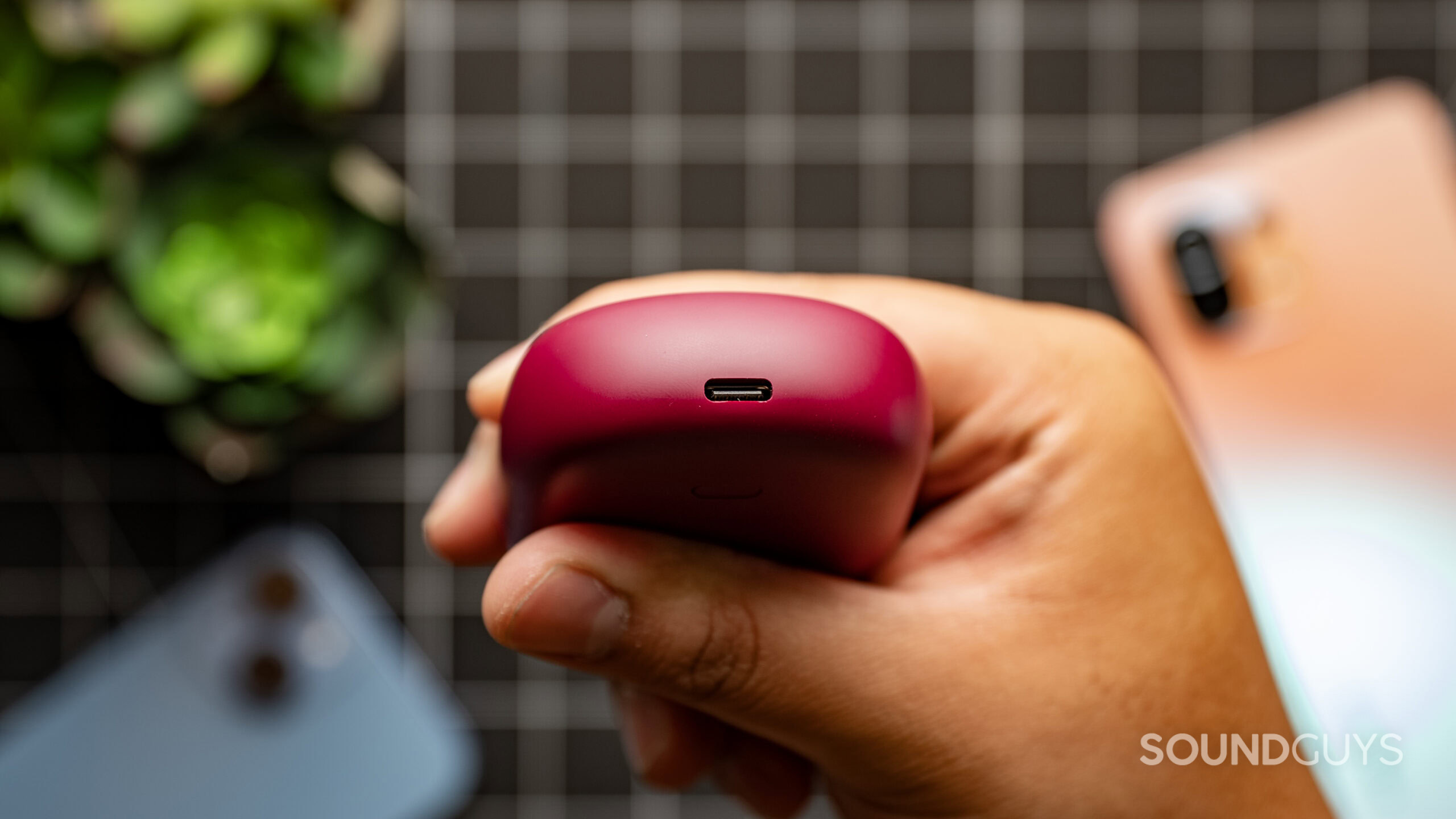All products featured are independently chosen by us. However, SoundGuys may receive a commission on orders placed through its retail links. See our ethics statement.
Bose QuietComfort Ultra Earbuds (2nd Gen) vs Bose QuietComfort Ultra Earbuds: Seeing double?
July 23, 2025


In my testing, both Bose QuietComfort Ultra Earbuds and the newer (2nd Gen) version aim to deliver a premium listening experience with active noise cancellation. While both share a similar design and feature set, the 2nd Gen version offers some updates that may appeal to certain users. I will outline the differences in use, features, connectivity, battery life, noise cancellation, sound, microphone performance, price, and ultimately, which earbuds might be the better purchase.
This article was originally published on July 23, 2025 and this is the first version.
What’s it like to use the Bose QuietComfort Ultra Earbuds (2nd Gen) compared to the Bose QuietComfort Ultra Earbuds?
I found the fit and comfort to be largely comparable between both sets of earbuds. Both use a familiar design, with a chunky earbud held in place by removable stabilizer fins and nozzles. The 2nd Gen version of QuietComfort Ultra Earbuds offer an ear wax guard in the new nozzles, which prevents some maintenance issues, though it doesn’t fundamentally change the listening experience any. I noticed that both sets of earbuds offer a stable fit during various activities, including walking and light exercise.

Both earbuds have an ingress protection rating of IPX4, and both earbuds are large enough that those with smaller ears may want to look elsewhere. Those with bigger ears will find the fit to be quite comfortable, however, as the ovoid nozzle is more conducive to a good fit than a more traditional cylindrical one.
The touch controls are very familiar, and can be customized in the Bose app to some degree. Really, there isn’t much different between the two earbuds. Which is a shame — some of the things that I didn’t like about the older earbuds are still headaches on the 2nd Gen version. For example, the stabilizer fin can sometimes spin around and get wedged in a weird way inside the charging case.
| Input | Left earbud | Right earbud |
|---|---|---|
| Input Single tap | Left earbud Play / pause | Right earbud Play / pause |
| Input Double tap | Left earbud Track forward | Right earbud Track forward |
| Input Triple tap | Left earbud Track backward | Right earbud Track backward |
| Input Long press | Left earbud Left programmable shortcut | Right earbud Right programmable shortcut |
| Input Swipe up / down | Left earbud Volume up / down | Right earbud Volume up / down |
| Gesture | Playback function | Call function |
|---|---|---|
| Gesture Swipe up | Playback function Volume Up | Call function N/A |
| Gesture Swipe down | Playback function Volume Down | Call function N/A |
| Gesture Tap | Playback function Play / Pause | Call function Answer call / Answer second call |
| Gesture Double tap | Playback function Track Forward | Call function End / Reject call |
| Gesture Triple tap | Playback function Track backward | Call function N/A |
| Gesture Long tap | Playback function Mobile device control / User control preset | Call function N/A |
Do the Bose QuietComfort Ultra Earbuds (2nd Gen) or Bose QuietComfort Ultra Earbuds have more features?
Aside from some mic upgrades, small design tweaks, and a wireless charging case, the Bose QuietComfort Ultra Earbuds (2nd Gen) is virtually identical to the Bose QuietComfort Ultra Earbuds. The added features of the Bose QuietComfort Ultra Earbuds (2nd Gen) don’t drastically alter the overall functionality, and the base model is still pretty solid for most users. Both earbuds have access to spatial audio modes (or as I call them, “speaker emulation modes”), both earbuds can toggle features like Multipoint in the app, and so on.
I’m a big fan of adding wireless charging to any product simply because it’s a secondary way to power your gear when a tiny solder point in a USB connector cracks, shatters, or otherwise fails. Stressing these tiny parts everyday is a lot for something so fragile to handle, and planning for part failures in your electronics is a great way to make your products more valuable for the long haul.

The biggest functional departure between both earbuds seems to be the inclusion of an updated transparency mode for the 2nd Gen earbuds. This new transparency mode will suppress very loud sounds as best as it can in order to prevent high peak sound levels reaching their users’ eardrums. Beyond that, there a few other minor upgrades, like the ability to turn off touch controls, or case battery level reporting through the app.
How do the Bose QuietComfort Ultra Earbuds (2nd Gen) and Bose QuietComfort Ultra Earbuds connect?
The Bose QuietComfort Ultra Earbuds (2nd Gen) use Bluetooth 5.3 with support for SBC, AAC, and aptX Adaptive codecs. They also enable Multipoint connectivity after a firmware update. Similarly, the original Bose QuietComfort Ultra Earbuds connect via Bluetooth 5.3 with the same range of codecs and offer Multipoint support post-update. They also both feature simple pairing procedures, quickly connecting to smartphones, tablets, and laptops.

Additionally, both sets of earbuds allow for connections to the Bose Music app, where users can customize settings, update firmware, and access additional features. The app provides a consistent experience across both models, ensuring ease of use for all customers. However, the app is not without its shortcomings for both models.
While it’s frustrating that the Bose QuietComfort Earbuds app offers a better EQ than the flagship app does, it’s just a bizarre reality owners of the Bose QuietComfort Ultra Earbuds (2nd Gen) and Bose QuietComfort Ultra Earbuds have to live with. I’m not sure why you’d saddle your flagship product with a lesser experience than lower-tier models have, but one of the main design elements Bose seems to favor is simplicity — and it shows here, too.
Is battery life better on the Bose QuietComfort Ultra Earbuds (2nd Gen) or Bose QuietComfort Ultra Earbuds?
I measured comparable battery life between the two models. Both the Bose QuietComfort Ultra Earbuds (2nd Gen) and the original QuietComfort Ultra Earbuds offer around 6 hours of playback on a single charge with ANC enabled. The charging case provides an additional 18 hours of listening time, bringing the total playback time to about 24 hours for both models.

While slight variations may occur depending on volume levels and usage patterns, the battery performance remains consistent between the two sets of earbuds. We found that the original earbuds were able to survive our battery test for 6 hours and 11 minutes, while the 2nd Gen gave up the ghost at 5 hours and 37 minutes. While that may sound like a huge shortfall, it really isn’t — it’s well within the range where changing your habits could increase battery life to match. For example, listening at a lower level, disabling features like Multipoint or spatial audio, etc.
Despite the fact that these earbuds are decent as far as battery life goes, it’s still not nearly enough to keep ’em out of the landfill. Over time, the tiny cells of both the Bose QuietComfort Ultra Earbuds (2nd Gen) and Bose QuietComfort Ultra Earbuds will degrade and wind up of limited utility. True wireless earbuds just aren’t built to last more than a couple years, so don’t buy either of these products if you’re hoping for something to last you the next 5 years minimum.
Do the Bose QuietComfort Ultra Earbuds (2nd Gen) or Bose QuietComfort Ultra Earbuds block noise better?
Loading chart ...
Both sets of earbuds deliver exceptional noise cancelation and isolation. In my testing, both the Bose QuietComfort Ultra Earbuds (2nd Gen) and the original QuietComfort Ultra Earbuds effectively block out a wide range of ambient noises, including traffic, airplane engines, and office chatter to a virtually identical degree. While the 2nd Gen may offer a slight improvement in high-frequency noise attenuation, the difference is negligible in real-world scenarios.
Do the Bose QuietComfort Ultra Earbuds (2nd Gen) sound better than the Bose QuietComfort Ultra Earbuds?
Neither the Bose QuietComfort Ultra Earbuds (2nd Gen) nor the Bose QuietComfort Ultra Earbuds has what we here at SoundGuys call audiophile-quality. Both sets of earbuds have a virtually identical performance from top to bottom, and this kind of performance is highly targeted at the mass market over enthusiasts. That’s really fine — most people like a lot of bass and treble — but this doesn’t appeal to everyone, and even the best listener preference research points us to the conclusion that a lot of people would like something else, instead.

Bose’s spatial audio mode, Immersive mode, is much more like emulating a set of speakers in front of you than it is a true spatial audio mode. You can either have the illusion of speakers in front of you, or you can turn head tracking on and have them “fixed” within a point in space around you. This illusion fooled me into thinking I’d been listening to my own speakers at my desk for a second or two when testing at my usual desk, but the sound quality in this mode is a little off.
Loading chart ...
There are a small number of presets available for each, and you can explore them at your leisure. However, the adjustments are very small, and unlikely to improve or change your impressions much. This goes for both products, as the app is the same for each.
Objective Measurements
Loading chart ...
Both the Bose QuietComfort Ultra Earbuds (2nd Gen) and Bose QuietComfort Ultra Earbuds have an extremely similar sound, and much of the differences in measurements can be chalked up to sub-millimeter positioning differences or minor measurement collection changes. Each product has overblown bass and overemphasized treble that will appeal to travelers and those listening in noisy environments, but less so to audiophiles. This kind of frequency response leaves a lot to be desired, as it’s not really meant for critical listening.
None of that is to say that most people would find anything objectionable about the sound quality here. By supporting the latest Bluetooth high-bitrate codec via Snapdragon Sound, anyone with a compatible phone will find themselves with a capable travel buddy. However, just be aware that the tuning of the headphones isn’t something that will change much, and if you’re sensitive to bass and treble-heavy sounds, there’s very little you can do to change that. Bose’s 3-band EQ doesn’t quite allow you to adjust all frequencies in the bands they represent, so it’s a frustrating experience if you want to change the sound. For example, that 3kHz peak is not something you can change much, so attempts to rein in the highs and lows are often better served by boosting mids, and so on.
Obviously, this kind of sound is not what we typically look for, though it will have its fans.
Multi-Dimensional Audio Quality Scores (MDAQS)
- Timbre (MOS-T) represents how faithfully the headphones reproduce the frequency spectrum and temporal resolution (timing information).
- Distortion (MOS-D) represents non-linearities and added noise: higher scores mean cleaner reproduction.
- Immersiveness (MOS-I) represents perceived source width and positioning: how well virtual sound sources are defined in three-dimensional space.
Like I said, most people will like the sound of the Bose QuietComfort Ultra Earbuds (2nd Gen) and Bose QuietComfort Ultra Earbuds, but there are tradeoffs to blowing out the bass and treble to meet consumer-friendly sound. One of these tradeoffs is that perceived distortion may be worse, and that shows in our testing. Additionally, while the overall scores are high here, it does not mean you, personally, will like these earbuds. Though the distortion of the newer model is less badly-rated, you should read that more as “the distortion is less objectionable” rather than the subcategory performance is much better.
Do the Bose QuietComfort Ultra Earbuds (2nd Gen) or Bose QuietComfort Ultra Earbuds have a better microphone?
The microphone performance is comparable between the two models. Both sets of earbuds utilize a beamforming microphone array to isolate the user’s voice and reduce background noise during calls. I found that both models deliver clear and intelligible voice reproduction in quiet environments.
However, performance can degrade somewhat in noisy environments, with some background noise bleeding into the call. Wind noise in particular seems to make the products both struggle. Overall, the microphone quality is sufficient for most everyday communication tasks.
Bose QuietComfort Ultra Earbuds (2nd Gen) microphone demo (Ideal conditions):
Bose QuietComfort Ultra Earbuds microphone demo (Ideal conditions):
Bose QuietComfort Ultra Earbuds (2nd Gen) microphone demo (Windy conditions):
Bose QuietComfort Ultra Earbuds microphone demo (Windy conditions):
Which mic do you prefer?
Bose QuietComfort Ultra Earbuds (2nd Gen) vs Bose QuietComfort Ultra Earbuds: Price and availability
The Bose QuietComfort Ultra Earbuds (2nd Gen) are priced identically to the original Bose QuietComfort Ultra Earbuds’ original MSRP. However, the original model will likely see more discounts and promotions now that the new model is out, making it a more affordable option. Both models are widely available from major retailers and directly from Bose’s website.
Should you get the Bose QuietComfort Ultra Earbuds (2nd Gen) or Bose QuietComfort Ultra Earbuds?
If you prioritize the latest features and are willing to pay a premium, the Bose QuietComfort Ultra Earbuds (2nd Gen) may be the better choice — but the upgrade is so minor it’s almost not worth talking about. The original Bose QuietComfort Ultra Earbuds remain an excellent option, delivering comparable sound quality, noise cancellation, and battery life at a more affordable price on sale. For most users, the updated features won’t be compelling to upgrade if they already own the Bose QuietComfort Ultra Earbuds.
Choose the Bose QuietComfort Ultra Earbuds (2nd Gen) if:
- You want wireless charging.
- You care deeply about transparency mode’s finer points.
- You often have earwax issues with your earbuds.
Choose the Bose QuietComfort Ultra Earbuds if:
- You can find it on sale.
- You don’t care about wireless charging.
- You don’t often have earwax issues with your earbuds.

Decent features
Comfortable

Immersive audio
Customizable fit
Thank you for being part of our community. Read our Comment Policy before posting.